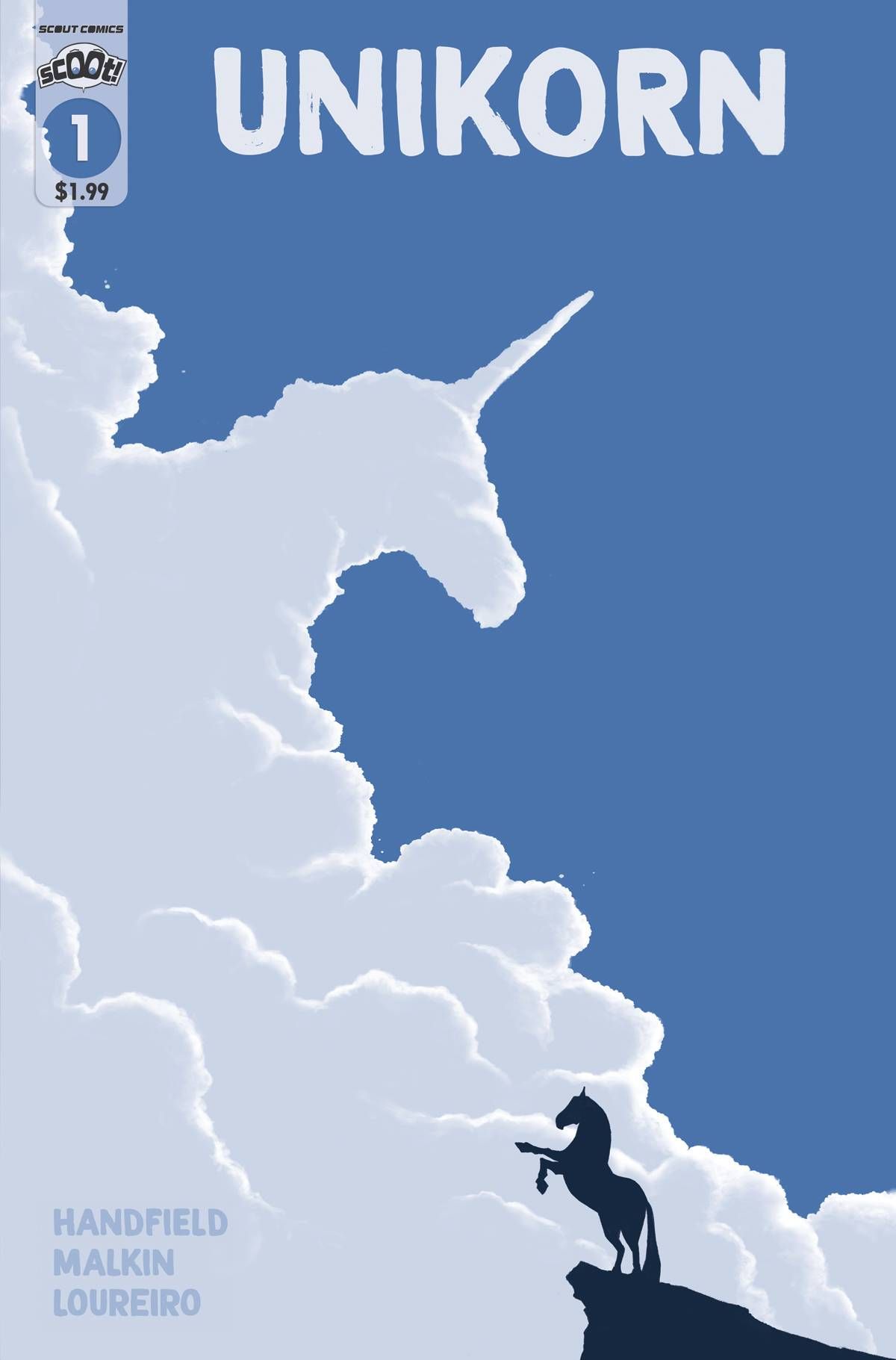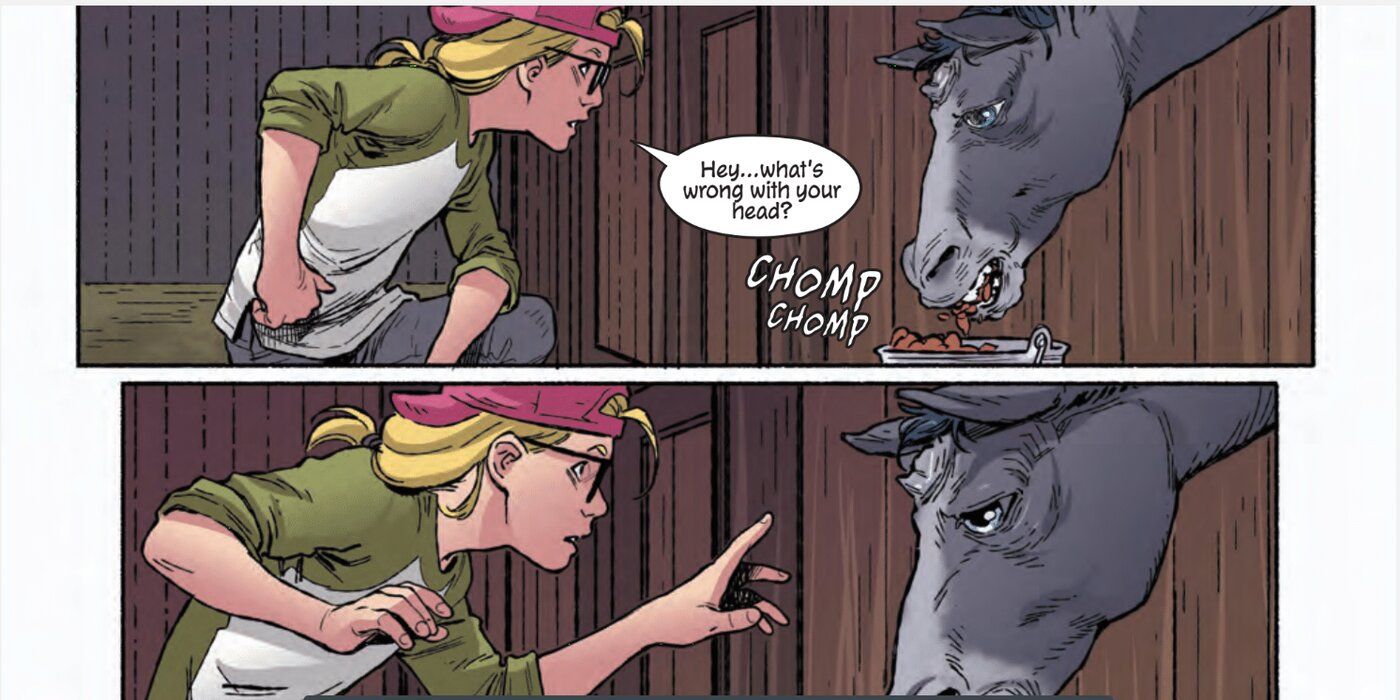Scout Comics' Unikorn #1
- WRITER
- Joshua Malkin, Don Handfield
- Artist
- Rafael Loureiro
- Letterer
- DC Hopkins
- Cover Artist
- Nicholas Ely
- Publisher
- Scout Comics
- Price
- 1.99
- Release Date
- 2021-04-14
- Colorist
- Dijjo Lima
In Don Handfield and Joshua Malkin's enchanting fantasy debut, Unikorn, unicorns are more than just the stuff of fairytales — they're real. Not only that, but they've been hiding among ordinary horses the entire time. Unikorn offers a new spin on a well-worn trope, wrapped up in all the trappings of a compelling fantasy classic. It's a tale about the strength of family, the power of friendship and the magic of the world that hides in plain sight.
In Unikorn, Mae is a mid-western middle schooler attempting to pick up the pieces of her shattered existence. It's been six years since a tragic accident stole her mother’s life, and Mae is doing all she can to keep what remains of her family intact. But when her father is forced to sell their farm due to financial hardship, it sends him spiraling down a well of guilt and depression. Desperate to keep the memory of her mother alive, Mae begins working as a farmhand for the elderly woman who purchased her family plot. It's here that Mae meets Percy: an incredibly ill-tempered bronco who once belonged to her mother. As she gets to know the majestic animal, Mae soon realizes that Percy is much more than just what he appears to be.
Don Handfield and Joshua Malkin have rekindled the chemistry forged on Scout Comics' The Source and are taking things to brand new heights. Unikorn is a rainbow on a cloudy day, possessing all the charm and allure of a classic YA fantasy novel. Those who grew up reading Philippa Pearce's Tom's Midnight Garden or the works of C.S. Lewis are sure to be delighted as there are several parallels that can be drawn. Most notably, Unikorn presents an eerily familiar lucid reality; the reader is forced to question whether or not what they're seeing is real or just the inner workings of an overactive imagination. The writing is evocative, even bordering on the poetic at times — particularly in Mae's overarching narration. But what's perhaps most impressive is Unikorn's undeniable sense of ambition; how the book looks to destroy every preconception about unicorns that has ever existed by adding an entirely new underlying element to their mythos.
Speaking of rekindled chemistry, the synergy of artist Rafael Loureiro and colorist Dijjo Lima is otherworldly. The front cover (drawn by Nicholas Ely) of a unicorn forming in the clouds does an excellent job of foreshadowing the book's driving theme: the inherently deceptive nature of appearances. Between the covers, Loureiro and Limo's aesthetic is steeped in nostalgia, reminiscent of iconic Saturday morning cartoons plucked from the 1980s. The page layouts are unique, displaying a clear understanding of artistic flow and storytelling capability. Everything from the shading, to the use of angles — right down to the physical emotions painted on the characters' faces — helps to propel Unikorn forward and invites the reader to keep going.
In the same way that Scott Snyder and Jock's Wytches put a distinctly modern spin on witches, Malkin and Handfield look to completely revamp all of our preconceptions when it comes to unicorns. Unikorn (spelled with a "k") pays homage to the mythical beast's fantasy world roots while seeking to introduce something entirely new and never before seen into the mythos. Unikorn is the perfect book for high fantasy veterans and newcomers alike. It's essential lore for anyone with an unquenchable thirst for adventure and boundless imagination. Simply stated: Unikorn is a must-read.


